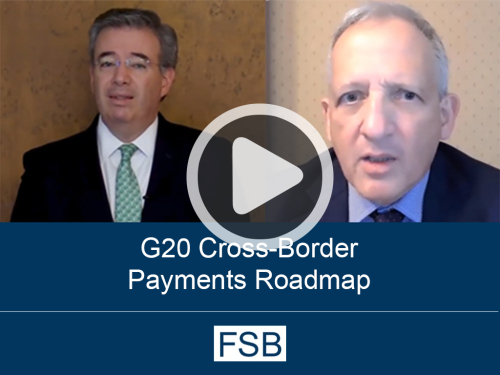Enhancing Cross-border Payments: Stage 3 roadmap
This report provides a roadmap to enhance cross-border payments. The G20 has made enhancing cross-border payments a priority during the Saudi Arabian Presidency. Faster, cheaper, more transparent and more inclusive cross-border payment services, including remittances, while maintaining their safety and security, would have widespread benefits for citizens and economies worldwide, supporting economic growth, international trade, global development and financial inclusion.
This report presents a roadmap to address the key challenges often faced by cross-border payments and the frictions in existing processes that contribute to these challenges. These challenges, namely high costs, low speed, limited access and insufficient transparency, affect end-users and service providers, though not all in the same way. Individuals and small companies face particular challenges with retail cross-border payments, and financial inclusion remains a challenge for many, especially in emerging market and developing economies. Low-value payments may incur high fees as a percentage of the amount sent and face cumbersome processes. The unbanked and individuals and firms from fragile states are amongst those who may not be able to access payment services at all.
This roadmap has been developed by the FSB, in coordination with the Committee on Payments and Market Infrastructures (CPMI) and other relevant international organisations and standard-setting bodies. It builds on the FSB’s Stage 1 report, setting out the challenges and the frictions in cross-border payments that contribute to them, and the CPMI’s Stage 2 report, describing the necessary elements of a response, in the form of a set of 19 building blocks.
The roadmap provides a high-level plan, which sets ambitious but achievable goals and milestones, and is designed to allow for flexibility and adaptation in the path to get there as the work progresses, while ensuring that the safeguards in terms of secure processing and legal compliance are observed. It encompasses a variety of approaches and time horizons, in order to achieve practical improvements in the shorter term while acknowledging that other initiatives will need to be implemented over longer time periods. It follows the structure of the Stage 2 report, setting out actions and indicative timelines in the following five focus areas:
- Committing to a joint public and private sector vision to enhance cross-border payments
- Coordinating on regulatory, supervisory and oversight frameworks
- Improving existing payment infrastructures and arrangements to support the requirements of the cross-border payments market
- Increasing data quality and straight-through processing by enhancing data and market practices
- Exploring the potential role of new payment infrastructures and arrangements
The first four focus areas seek to enhance the existing payments ecosystem. The fifth is more exploratory and covers emerging payment infrastructures and arrangements. While each of the building blocks in the first four focus areas individually has the ability to bring notable benefits to cross-border payments, they have many interdependencies and the most significant enhancements are likely to be achieved if they are all implemented in a coordinated manner. The potential for new payment infrastructures and arrangements will also depend on the first four focus areas delivering change.
Strong commitment, coordination and accountability will be critical to success. The roadmap incorporates a framework where individual actions are taken forward by the most suitable expert bodies, in accordance with their mandates, with the FSB providing coordination and reporting annually on progress to the G20 and the public. This process will provide an opportunity to update and adapt the roadmap over time in order to keep it on track to meet its overall goals.
The involvement of the private sector, sharing their insights and practical expertise, as well as delivering change, will be key to support the practical implementation of the roadmap. The work under each building block will consider how to most effectively involve them. Public consultation on the individual building blocks will take place at the appropriate points, in order to ensure transparency and accountability.


